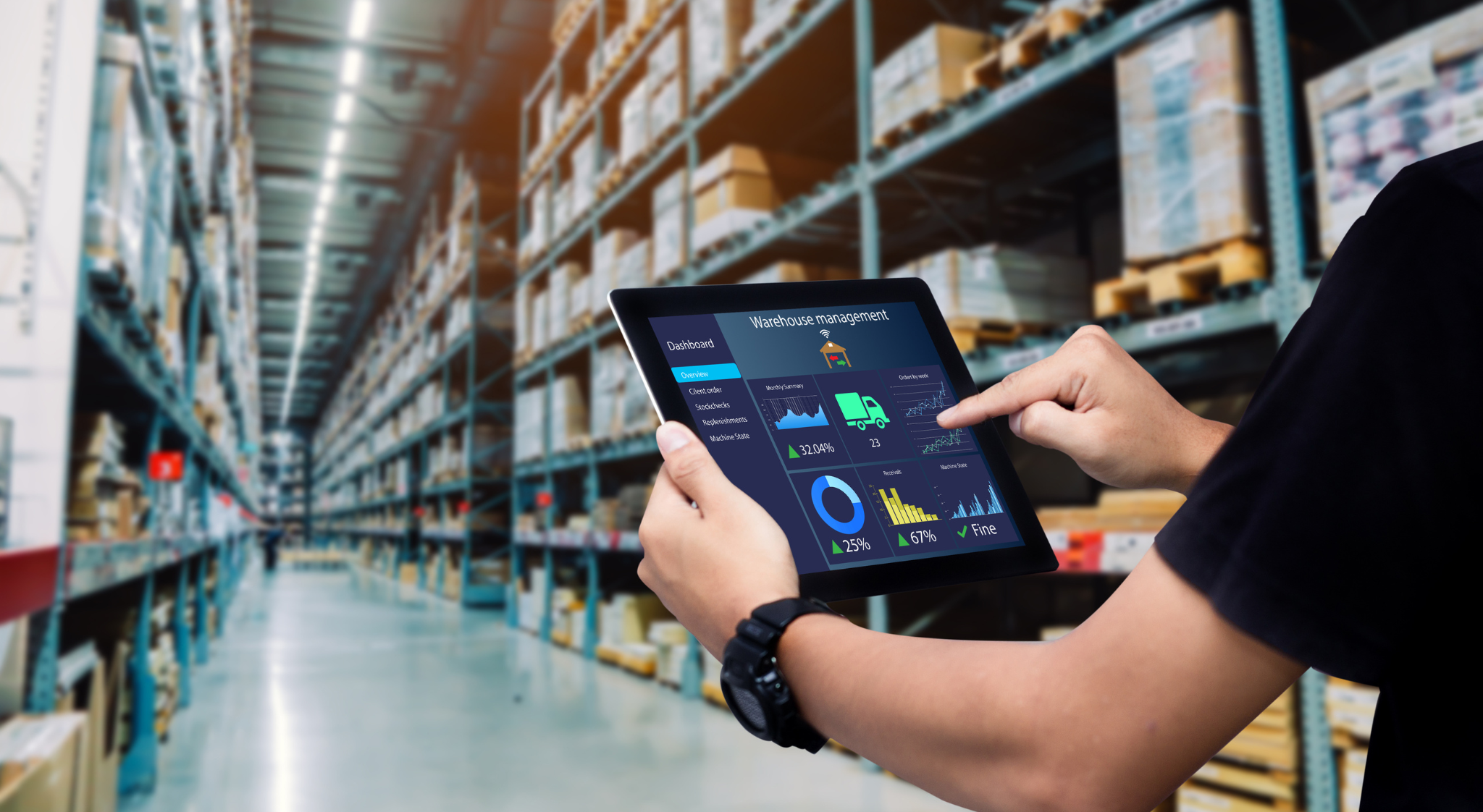Introduction
In today’s data-driven world, businesses that harness the power of data centralisation and reporting are far better positioned to optimise their processes, make informed decisions, and achieve sustainable growth. Data centralisation refers to the consolidation of information from various departments and systems into a single, unified platform, allowing businesses to streamline operations and improve overall efficiency. For senior commercial managers, understanding how to define and measure processes effectively is crucial in supporting the success of a data centralisation and reporting project. By centralising data, businesses not only create a single source of truth but also ensure that insights are accessible in real time, enabling more accurate decision-making and a clearer view of performance across the entire organisation.
This blog post will guide you through the key steps and considerations for leveraging data centralisation and reporting to create visibility, enhance process controls, and drive process optimisation. From identifying which data points to centralise, to selecting the right tools and technologies, we will explore how data centralisation can reduce silos within an organisation and provide senior commercial managers with a holistic view of business performance. With data centralisation, teams can more effectively monitor key metrics, streamline workflows, and implement continuous improvements to processes. Ultimately, businesses that embrace data centralisation are better equipped to respond to market changes, mitigate risks, and achieve long-term growth.
Problem Statement
Many businesses struggle with disparate data sources and lack centralised reporting, leading to inefficiencies, poor visibility, and suboptimal decision-making. Without a cohesive approach to data management, it becomes challenging to monitor, measure, and optimise business processes effectively.
Solution Overview
Data centralisation and reporting streamline data from various sources into a single, unified platform. This consolidation facilitates better visibility, control, and optimization of business processes. By defining and measuring key processes, senior commercial managers can leverage data to drive informed decisions and improve overall business performance.

Detailed Guide
1. Define Key Processes
Identify Critical Processes: Start by pinpointing the core processes that are vital to your business operations. These may include sales, customer service, supply chain management, and financial reporting.
Map Out Process Steps: Detail each step involved in the identified processes. Create flowcharts or process maps to visualise how tasks flow from one step to another. This will help you understand dependencies and potential bottlenecks.
Set Clear Objectives: Determine the goals for each process. What outcomes are you aiming to achieve? Clear objectives will guide your measurement and optimization efforts.
2. Establish Measurement Criteria
Select Key Performance Indicators (KPIs): Choose relevant KPIs that align with your business objectives. For instance, for sales processes, KPIs could include conversion rates, average deal size, and sales cycle length.
Implement Data Collection Methods: Ensure that you have robust data collection mechanisms in place.
Automate Data Capture: Where possible, automate data capture to minimise human error and ensure real-time data availability.
| Assessing Existing KPIs and SLAs in the Context of Ground-Up Process Mapping |
|---|
| When undertaking a ground-up process mapping initiative, it’s essential to critically evaluate your existing Key Performance Indicators (KPIs) and Service Level Agreements (SLAs). This assessment ensures that your metrics are still relevant and aligned with your new, more detailed understanding of your processes. Here’s how to approach this assessment: 1. Review Alignment with Business Goals: Ensure that your existing KPIs and SLAs align with your current business goals. As processes evolve, the relevance of certain metrics may change. Confirm that each KPI and SLA still supports your strategic objectives. 2. Validate Data Sources: Examine the data sources feeding into your KPIs and SLAs. With a ground-up process mapping, you might identify more accurate or comprehensive data sources. Ensure that your metrics are based on the most reliable and relevant data. 3. Evaluate Metric Relevance: Assess whether your current KPIs and SLAs are still meaningful in the context of your newly mapped processes. Some metrics might need to be adjusted or replaced to better reflect the actual performance and efficiency of your processes. 4. Identify Gaps and Redundancies: Through detailed process mapping, you may uncover gaps in your current measurement framework or identify redundant metrics. Address these gaps by developing new KPIs or refining existing ones to provide a more complete and accurate picture. 5. Ensure Comprehensive Coverage: Make sure your KPIs and SLAs cover all critical aspects of your processes. Ground-up process mapping might reveal previously overlooked areas that now require specific metrics to monitor performance effectively. 6. Incorporate Stakeholder Feedback: Gather input from various stakeholders to understand the practical implications of your KPIs and SLAs. Stakeholder feedback can highlight areas where metrics may need to be adjusted to better reflect operational realities and support decision-making. 7. Use SMART Criteria: Evaluate your KPIs and SLAs against the SMART criteria (Specific, Measurable, Achievable, Relevant, Time-bound). This ensures that your metrics are well-defined and actionable, providing clear guidance for process improvement. 8. Integrate with New Processes: Align your existing KPIs and SLAs with the newly defined process steps. Ensure that each metric is integrated into the appropriate stage of your processes, enabling continuous monitoring and improvement. By carefully assessing and refining your existing KPIs and SLAs in the context of a ground-up process mapping, you can create a more effective measurement framework. This alignment will enhance your ability to monitor, control, and optimize your business processes, leading to better performance and outcomes. |
3. Centralize Data
Integrate Data Sources: Use data integration tools to combine data from different sources into a centralised repository. Kleene.ai’s platform can help streamline this process by connecting various data sources seamlessly.
Ensure Data Quality: Implement data cleansing procedures to maintain high data quality. This includes removing duplicates, correcting errors, and standardising data formats.
Use a Unified Data Platform: Leverage a unified data platform like Kleene.ai to centralise and manage your data efficiently. This will facilitate easier access and analysis of your data.
4. Develop Reporting Mechanisms
Create Custom Dashboards: Design custom dashboards that provide real-time insights into your key processes. These dashboards should be tailored to the needs of different stakeholders within your organisation.
Generate Automated Reports: Set up automated reporting to deliver regular updates on process performance. Automated reports can be scheduled to run at specific intervals, ensuring timely information for decision-making.
Utilise Visualisation Tools: Employ data visualisation tools to present complex data in an easy-to-understand format. Charts, graphs, and heat maps can make it easier to spot trends and anomalies.
5. Implement Controls and Optimization
Monitor Process Performance: Continuously monitor the performance of your processes using the centralized data and reporting tools. Regularly review KPIs and other performance metrics.
Identify Improvement Areas: Analyse the data to identify areas where processes can be optimised. Look for patterns, trends, and outliers that indicate inefficiencies or opportunities for improvement.
Implement Changes and Measure Impact: Make informed changes to your processes based on the insights gained from your data analysis. Measure the impact of these changes to ensure they are delivering the desired improvements.
Conclusion
Data centralisation and reporting are powerful tools for senior commercial managers looking to enhance process visibility and optimization. By defining and measuring key processes, integrating data sources, and utilising robust reporting mechanisms, you can drive significant improvements in your business operations. Kleene.ai offers the technology and expertise to support your data centralisation efforts, helping you achieve better visibility, control, and optimization of your processes.
Using Kleene For Retail Demand Forecasting
While there are many demand forecasting solutions available in the market, Kleene offers a range of features. These are designed to take your retail demand forecasting capabilities to new heights.
Kleene empowers CFOs to:
- Enhance the accuracy of demand planning by identifying complex patterns and trends that human analysts might overlook.
- Increase visibility of how cash is allocated leading to better predicting how to best allocate resources
- Increasing fill in rates and reduce overstock, thereby freeing up working capital
- Anticipate changes in consumer demand by forecasting future trends based on current data, enabling proactive decision-making.
The AI-powered demand model offers the following capabilities:
- Integrating multiple data sources to exponentially increase forecast accuracy.
- Precisely tailor the algorithm to your business specific needs –
- Making hyper-granular predictions by considering various inputs from the supply chain and other departments
- Predicting future inventory levels to optimise inventory management and meet service level agreements (SLAs).
- Automating supply workflows to streamline operations and minimise manual effort.
Demand forecasting for CFOs, enabling them to make informed decisions, optimise capital allocation, and drive sustainable growth in the retail domain. Leveraging advanced methodologies, tools and AI-powered solutions like Kleene, CFOs can unlock actionable insights and work through uncertainty with confidence.
Download our free e-book on how CFOs can master working capital in retail.
You may also like:
How top 1% retail CFOs are utilising AI to improve stock forecasting and impact the bottom line



